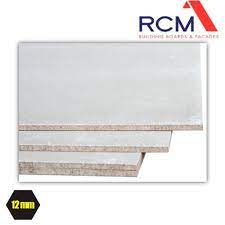Internet Design

What is Web Design?
Web design refers to the design of websites which are displayed on the internet. It typically refers to the elements of user-experience in web development, not the development of software.
Web design was once designed to be primarily for desktop browsers; however, since the mid-2010s designing for tablet and mobile users has become increasingly crucial.
A web designer works on the appearance, layout, and in some instances the content on a website. Appearance, for instance, relates to the colors or fonts and images employed.
Layout refers to how data is organized and classified. A professional web design is simple to use attractive and appealing to the eye and fits the users and brand of the website.
Many webpages are designed with an eye on simplicity in order to make sure that no additional features and information that could distract or confuse users appears. As the primary element of a web designer’s work is a site that wins and builds trust with the audience they are targeting, eliminating as many potential points of frustration for the user as it is possible is a critical factor to consider.
Two of the most common methods for designing websites that work well both on mobile and desktop devices are dynamic and adaptive designs. In responsive design, content shifts dynamically according to the screen’s size. In adaptive design, the website content is formatted in dimensions that are compatible with common screen sizes.
The ability to keep a layout as consistent as possible between devices is essential to maintain user trust and engagement. Because responsive design can cause issues in this area, designers must be careful to give up control over the way their work appears.
If they’re responsible for the content as well even though they will need to improve their skills they’ll enjoy the benefit of complete control of the finished product.
Better design is by understanding the medium we use. Even at this late cultural hour, many people do not know the basics of web design. They include some of our most distinguished business and cultural leaders, with a few having an impressive understanding of design–but not with regard to the internet.
Many who aren’t knowledgeable about web design nevertheless have the job of creating websites or supervising developers and web designers. Others who don’t understand web design, however, are charged with evaluating it on behalf of the rest of us.
People who aren’t aware create the most noise. They are the ones who lead charges, slamming doors, and throwing money at everyone who isn’t right and objects.
If we’d like better sites that work better, as well as better-informed clients, the need to teach starts with us.
Preferring real estate to architecture
It’s difficult to grasp web design if you’re not a web expert. And it’s hard to understand the web when people that are hired to help explain the web either aren’t able to grasp it or are forced by commercial reasons to suppress the things they do know and emphasize the Barnumesque over the brilliant.
The news media too often isn’t on the right track. A lot of online journalism is based on the money, while a small portion includes ideas and art. Motivated by editors who are pressured by editors worried about the disappearance of advertisers, even journalists who know about the internet have a tendency to spend the majority of their time discussing deals, and making quotes from dealmakers. Some do this despite the fact that the quote they’re using is clearly self-serving and ridiculous, such as Zuckerberg’s Law.
There’s no reason to think that Zuckerberg isn’t newsworthy; nor is it that business isn’t some journalists’ beat. Focusing on business to the exclusion of all other topics is similar to reporting on real estate deals while ignoring architecture.
And one tires of the news narrative’s one-dimensionalism. In 1994, the internet was wild and wacky according to the news media. In 1999, it was a kingmaker. in 2001, it was a failure. In 2002, newsies began to use blogs. In 2004 guests on CNN revealed how citizen journalists were reinventing news and democracy , and were going to decide who won the presidential election. I forget how that one came out.
When outrageous predictions die ridiculous death, nobody leaves the newsroom, they just put a new line in the water, like marketers replacing a slogan that tanked. After decades of commoditization of news the most remarkable thing is the amount of great reporters are still out there, and how hard many attempt to present an accurate story before the public. Sometimes you can almost feel it under the noise of the ridiculous and extraordinary.

THE SUSTAINABLE CIRCLE OF SELF-REGARD
The media isn’t the only ones to get it wrong. Professional associations make mistakes every dayand celebrate their errors through an annual event. Every year, advertising and design magazines and professional organizations hold contests for “new media design” judged by those who won last year’s competitions. The fact that they refer to it as “new media design” tells that they have no idea and you and me everything.
There are exceptions but for the most part , creators of winning entries see the web as a vehicle to promote marketing and advertising that allow the user to passively is exposed to Flash and video content. For those who are active Gaming is a possibility, but what we and I consider to be active web usage is confined to clicking on a “Digg this page” button.
The winning sites look fabulous as screen shots in glossy annuals of design. When the winners become judges and reward their work as their own. This is why websites that act like TV and look nice between covers continue to be developed, and a plethora of art directors and customers thinks that stuff is the best of web design.
DESIGN CRITICS GET IT WRONG, TOO
People who are skilled in printing might be less knowledgeable on the web. Their critical abilities, refined to perfection in Kerning Wars Kerning Wars, smash to pieces against the barriers of our industry.
The less sophisticated lament on our behalf that we are stuck with ugly fonts. They ask about how we can work in a space that gives us nothing more than complete control over every atom of the visual experience. They are asking is whether or not we’re real creators. (They think we’re not.) These are the seniors, the design students and future critics. Their opinions are valuable to their professors They’re also a source of hope for those who have good ones.
The more sophisticated critics realize that the web is not printing, and that limitations are an integral part of any design discipline. Yet even these eggheads will occasionally fall prey to sloppy comparisons. (I’ve done this myself, though long ago and solely for laughs.)
Where are the masterpieces of web design? critics ask. The fact that Google Maps might be as modern as the Mona Lisa was of Leonardo’s–and equally brilliant in its own way, is an answer, however it may not satisfy the design critic in search of a direct parallel to, oh, I am not sure, let’s try Milton Glaser’s famous Bob Dylan poster.
Typography, architecture, and web design
The issue is that web design, even though it incorporates elements of graphic design and illustration is not a map of the graphic design and illustration. If one must examine the web with other media, then typography is a better option. Web design as a typeface provides a space for someone who is expressing themselves. Keep watching and I’ll tell you which web design looks like Helvetica.
Architecture (the kind that uses glass and steel as well as stone) can also an appropriate comparison, or at the very least, more appropriate than posters. The architect designs grids and planes that aid in the behavior of people. Having designed, the architect relinquishes control. With time, the individuals who use the building bring out and add to the meaning of the architect’s plan.
Of course any comparison is gritty by nature. What’s”the “London Calling” of television? Which is the Jane Austen of automotive design? Madame Butterfly is not less stunning for the lack of a car chase sequence, and peanut butter is equally delicious, even though it’s not able to dance.

SO WHAT IS WEB DESIGN?
Web design is not book design, it is not poster design, it’s non-illustration, so even the greatest achievements of those disciplines are different from what Web design was created at. Web sites can serve as delivery mechanisms for games and videos, and even though those delivery systems can be lovely to look at they are also examples of video-based storytelling and games, but not that of Web design. What is web design?
The Web Design is development of digital spaces that encourage and promote human activity. adjust or reflect individuals’ voices and preferences; and evolve gracefully with time, while retaining their identity.
We’ll repeat it and with the emphasis:
Webdesign is the design of digital spaces that encourage and promote human interaction; respond to and adapt to the different voices and contents and adapt gracefully with time while maintaining their identity.
SHE WALKS IN BEAUTY
Excellent web designs are like fantastic typefaces. Some fonts, like Rosewood add a unique character on whatever content is applied to them. Others, like Helvetica fade into background (or try to) by magically enhancing whatever tone the content provides. (We can argue tomorrow whether Helvetica is the same as water in its neutrality.)
Which web design is like the one above? For one, Douglas Bowman’s white “Minima” layout for Blogger which is used by literally millions of writers. It also appears as if it was designed for each of them individually. That is great design.
Web designs that are appealing and attractive are similar to great buildings. Each office building, although distinctive, have lobbies and bathrooms as well as stairs. Websites, too, share similarities.
While a stunning design for a website is completely individual, it is also very similar to others that have similar roles.
It’s the same with great magazine and newspaper layouts that differ from the standard newspaper and magazine layouts in hundreds of subtle points. Few celebrate great magazine layouts and layouts, but millions of people unaware of their value even though they are not a thing of the past. they are not posters.
The uninformed or unthoughtful designer complains that too many websites utilize grids, too many sites use columns, too many sites have a look that is “boxy.” Efforts to avoid boxiness have been around since 1995. While they have been occasionally successful, they’ve typically resulted with ugly and useless designs.
The experienced web designer, like the talented newspaper art director, is aware that many projects she works on will contain headers and columns and footers. Her role isn’t to complain about emerging commonalities but to use these to design pages that stand out natural, brand-appropriate, discreetly memorable, and quietly but utterly engaging.
If she is able to accomplish all of that and sweats over the finer details her work will look gorgeous. If not everyone can appreciate the beauty of this work–if no one understands web design–then let us not grieve for web design but for those who are unable to see.



